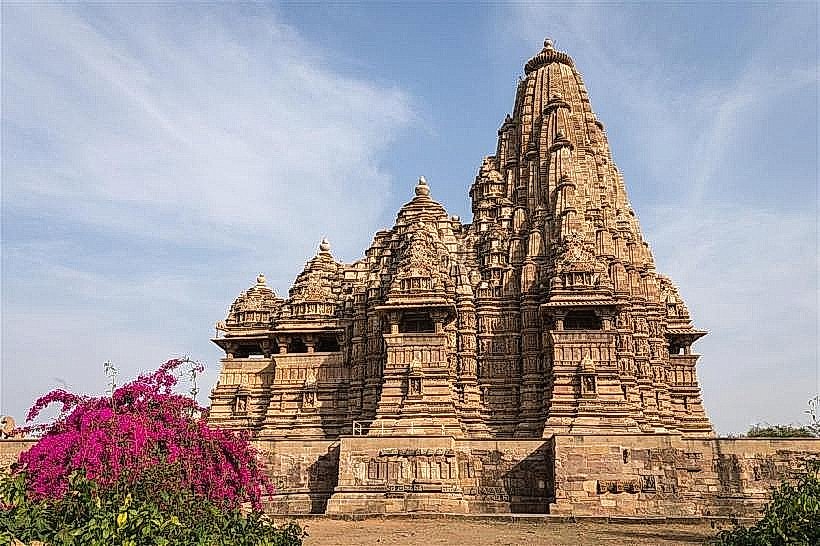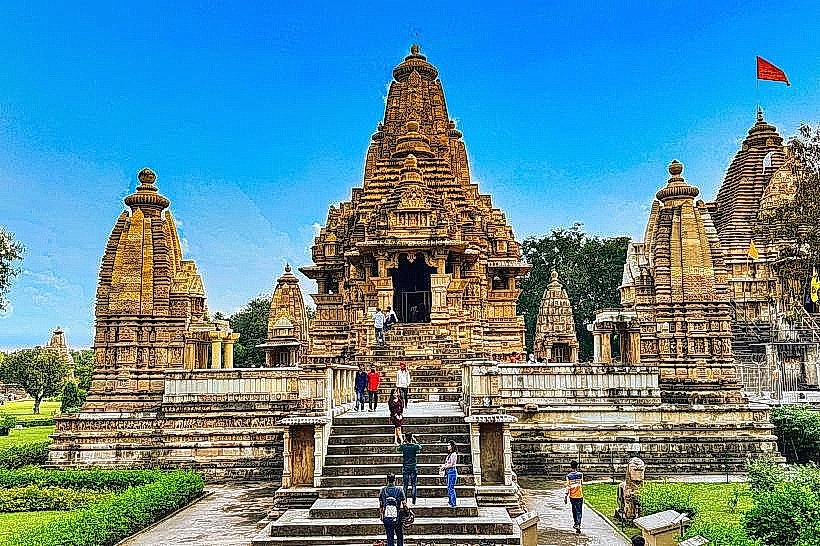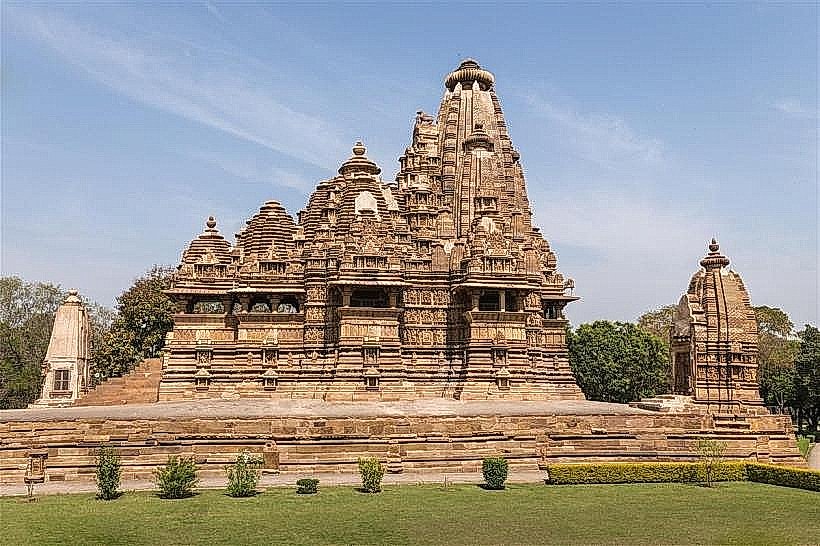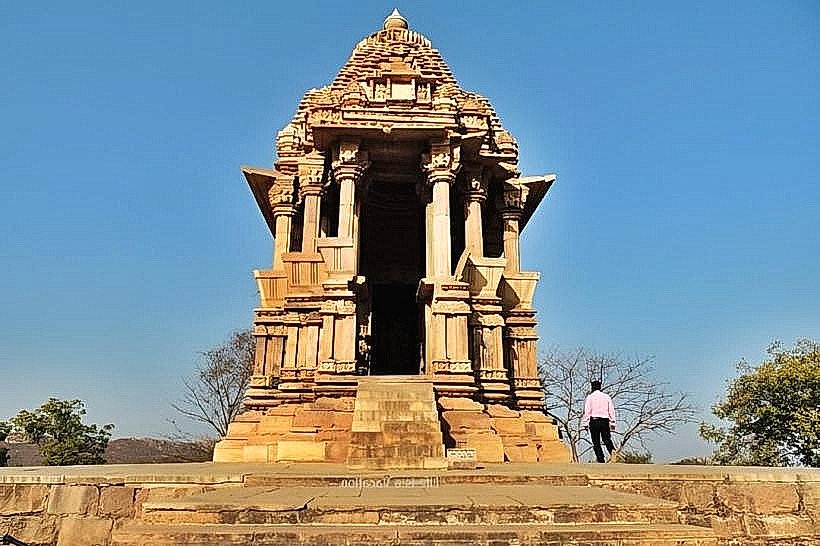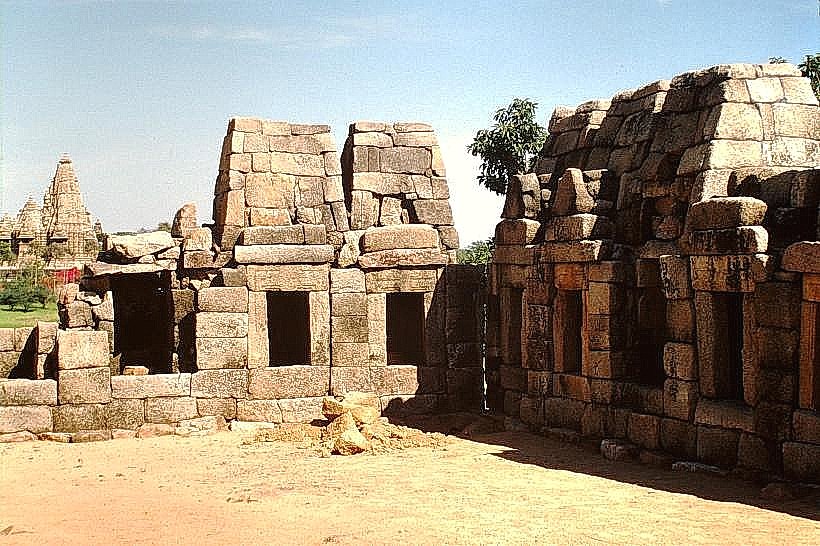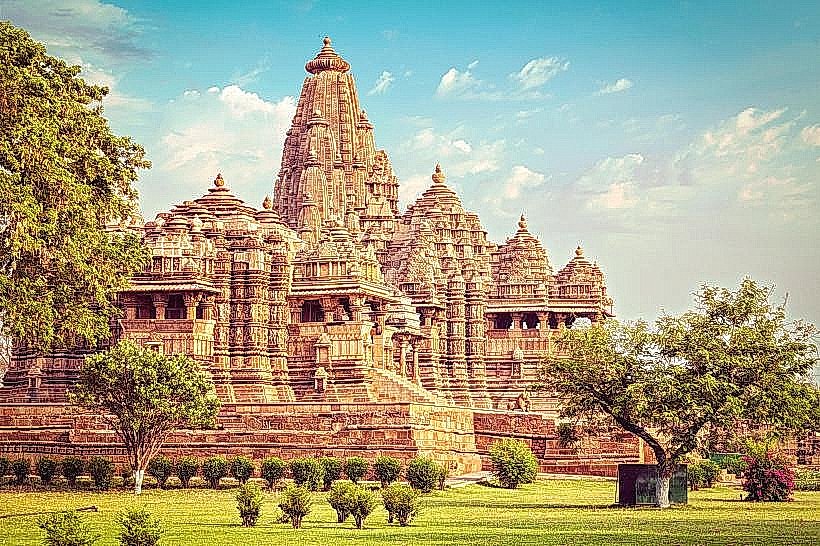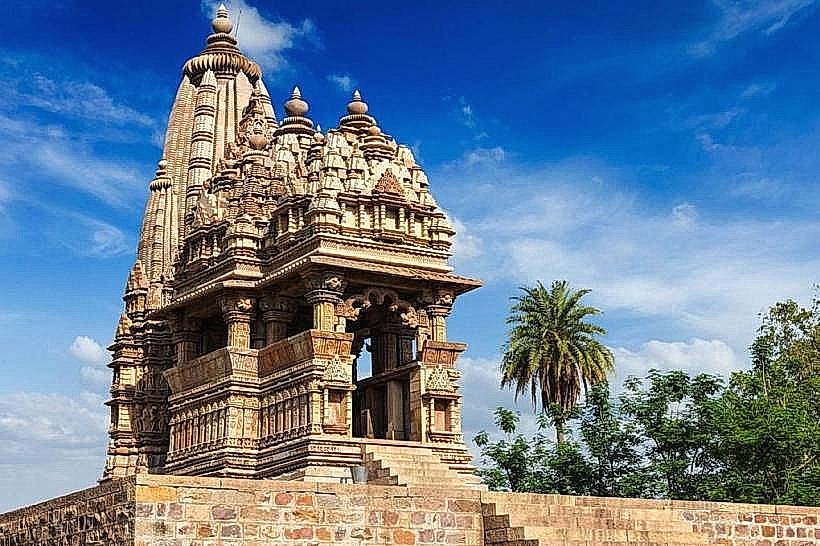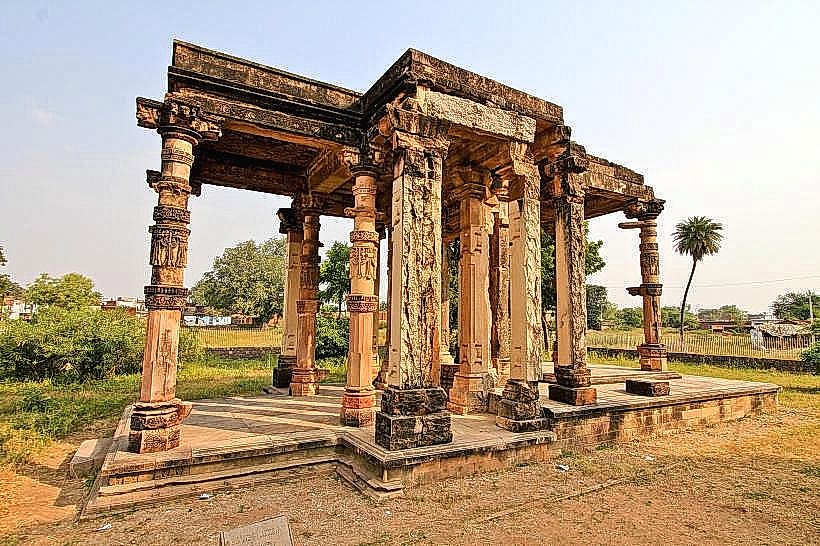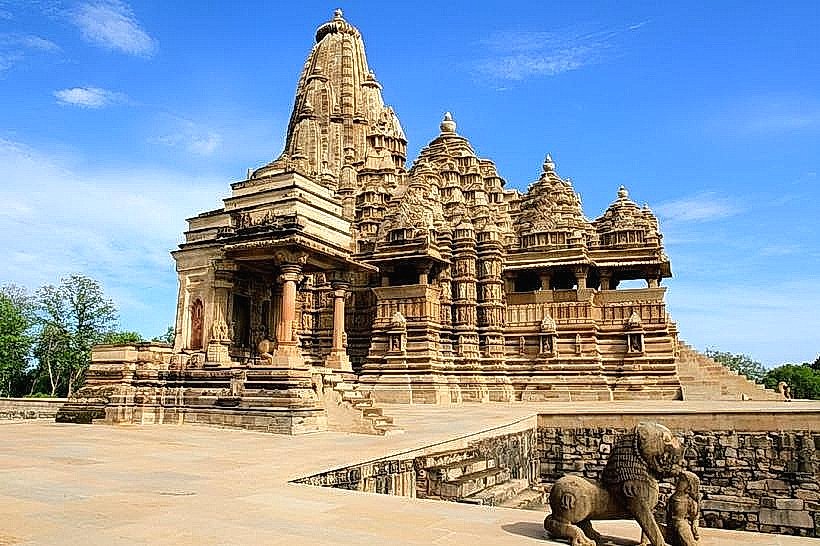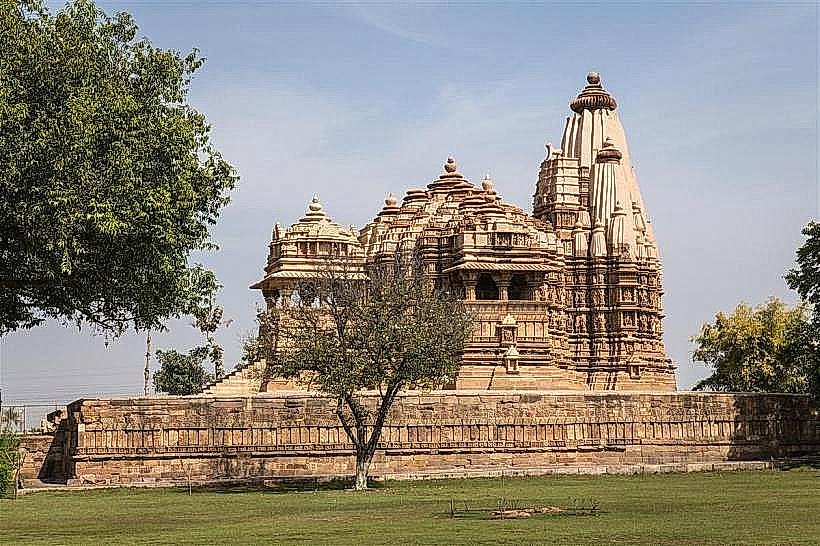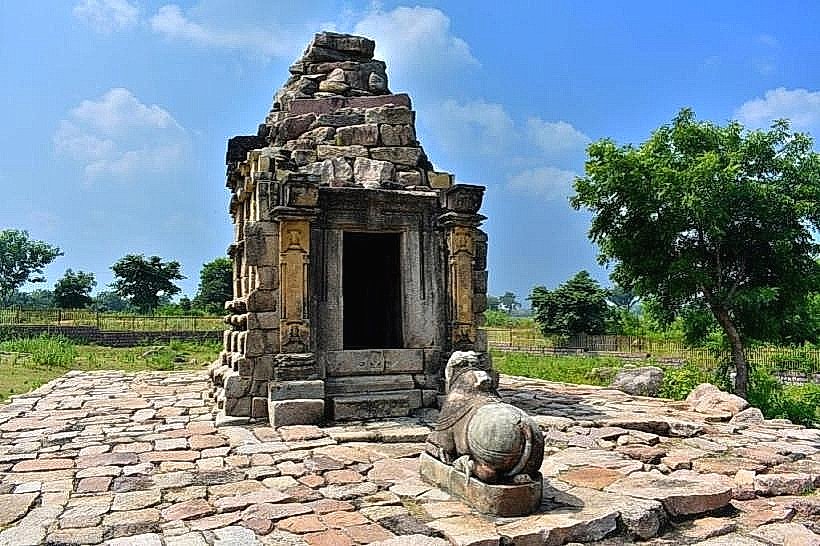Information
Landmark: Dulhadev TempleCity: Khajuraho
Country: India
Continent: Asia
Dulhadev Temple, Khajuraho, India, Asia
Overview
Set a little apart from the tighter cluster of Khajuraho’s eastern temples, Dulhadev Temple-also called Duladeo-marks the Chandela dynasty’s last great burst of temple building, around 1000 to 1150 CE, its sandstone glowing warm in the afternoon light, in addition dedicated to Lord Shiva, the temple-often called “Dulhadev,” or “Divine Bridegroom”-honors his sacred role in the cosmic union, its stone walls seeming to shimmer like they hold a quiet blessing.From what I can see, Set beside the quiet Khodar River, it’s a perfect venue to pause and reflect, far removed from the crowded bustle of the central temples, in addition the temple, formed entirely from warm sandstone, follows the traditional Nagara style yet stands out with a few distinctive touches.Unlike most Khajuraho temples, the Dulhadev shrine is nirandhara-it has no walkway circling the sanctum, just a quiet stone floor that stops at the inner wall, and it stands on a raised plinth, and you reach the inner sanctum (garbhagriha) through a square vestibule (antarala) that opens into a wide maha‑mandapa (main hall), where sunlight pools on the stone floor.Curiously, The mandapa’s eight-sided design-rare among the temples of Khajuraho-creates a feeling of spacious openness, as light glances across its carved pillars, in addition the roof rests on pillars carved with graceful detail-lotus petals curling open, crisp geometric lines, and figures that seem to drift through the air.A curving shikhara in the Nagara style rises above the sanctum, its layers of tiny urushringas stacked like rippling waves, shaping a graceful vertical rhythm against the sky, subsequently the temple stands out for its 999 miniature Shivalingams carved into the central one-a breathtaking display of devotion gleaming softly in lamplight-and completing a single pradakshina around it is said to equal a thousand.Though the outer walls aren’t as lavish as those of the earlier Khajuraho temples, they still display delicate carvings-apsaras poised mid-dance, celestial musicians caught in motion, and patterned motifs that keep the refined grace of Chandela art alive, equally important sculptors highlighted elegant posture, the soft ripple of fabric, and a sense of balance over sensual appeal, showing how their late work turned toward spiritual, not worldly, themes.At the temple’s center, the Shivalingam rises on its polished pedestal inside the sanctum, gleaming softly and ready for worship, and the room feels deliberately bare, pulling every glance toward the deity’s statue gleaming at the center.I think, Tiny alcoves around the sanctum hold figures from Shiva’s retinue, offering quiet context without stealing focus from the central act of worship, also inside, the plain walls sharply contrast with the intricate carvings outside, drawing devotees and visitors into a quiet, thoughtful calm.The architecture and carvings of the Dulhadev Temple capture the Chandela dynasty’s spiritual depth, revealing Shiva’s cosmic power and the devotion of his sacred marriage, like stone petals unfolding in quiet reverence, consequently the 999-linga design invites steady, meditative repetition and deep devotion, linking each quiet ritual to the rhythm of sacred numbers-like beads sliding through your fingers in prayer.The octagonal hall rises around an elevated plinth, shaping the temple’s main axis and guiding worshippers as they circle in quiet ceremony, footsteps echoing against the stone, to boot as visitors near the temple, they observe it rise on a broad stone plinth, the path tilting gently upward toward the mandapa, in a sense The peaceful spot invites gradual wandering, plenty of room to circle the temple and study each of its sixty‑four carved panels, the stone cool beneath your fingertips, along with at sunrise, the carved figures and shikhara reliefs catch the sharp light, their edges clear as chisel marks; by late afternoon, the sandstone glows softly, turning the temple walls honey-gold.The soft trill of birds and the low murmur of the Khodar River bring a calm, natural ease to the moment, along with photography lovers admire the temple’s graceful balance-its stone arches framed perfectly in the afternoon light-while pilgrims come seeking the Shivalingam, moved by its deep spiritual power, roughly The site feels quietly calm, inviting you to pause and think, a peaceful contrast to the bustle of the crowded Kandariya Mahadev or Lakshmana temples where footsteps and chatter fill the air, alternatively the Dulhadev Temple stands as the Chandelas’ final great creation in Khajuraho, the closing chapter of centuries of their artistry and temple design-a masterpiece whose sandstone carvings still catch the sun’s glow, almost Its clean, graceful design, layered with numerical symbolism and deep devotion, shows how Chandela faith and architecture grew-like stone catching the first light of dawn, as a result at Dulhadev Temple, ritual depth meets graceful stonework and a quiet, contemplative air, letting visitors glimpse the spiritual and artistic peak of Khajuraho’s late temple era as sunlight slides across its carved sandstone walls.
Author: Tourist Landmarks
Date: 2025-11-19

